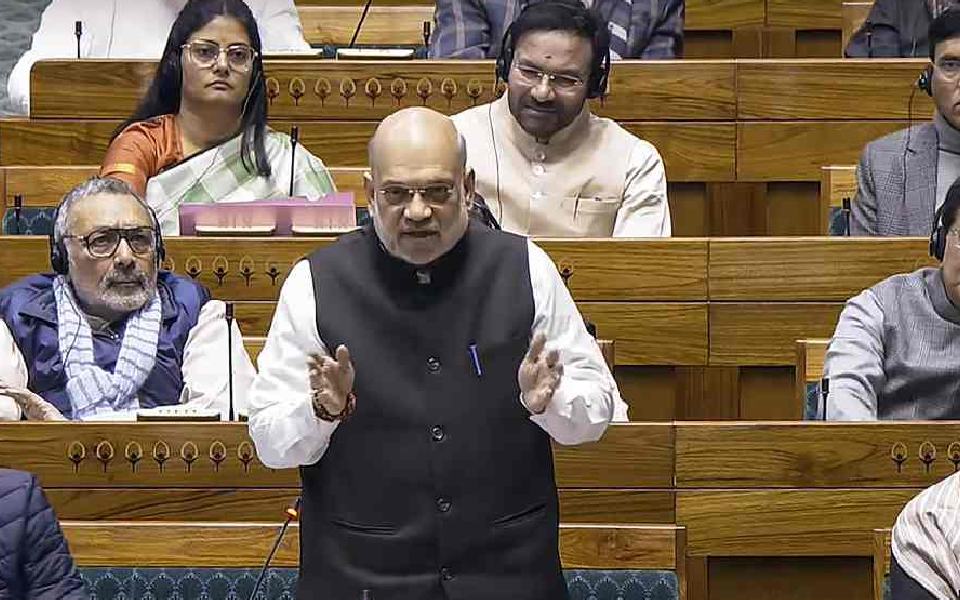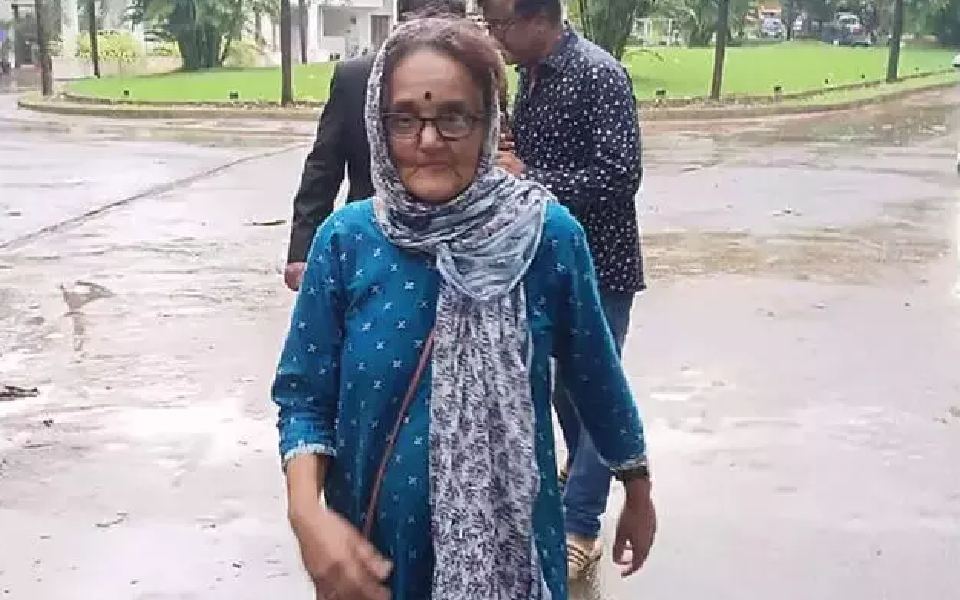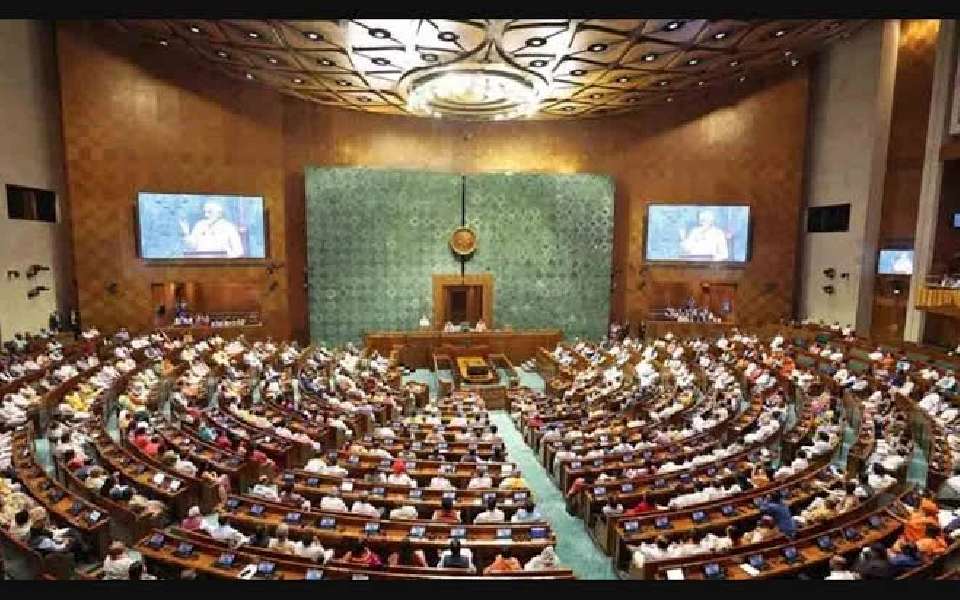New Delhi, Sep 14: The government on Wednesday approved the inclusion of certain communities in the lists of Scheduled Tribes in Chhattisgarh, Tamil Nadu, Karnataka, Himachal Pradesh and Uttar Pradesh, fulfilling long-pending demands from these states.
The decision, taken at a meeting of the Union Cabinet chaired by Prime Minister Narendra Modi, was welcomed warmly by the states concerned.
Briefing reporters after the cabinet meeting, Tribal Affairs Minister Arjun Munda said 12 communities from Chhattisgarh will be included in the list of Scheduled Tribes for the state. He said the demand was pending for 15 years.
In poll-bound Himachal Pradesh, the Hattee community of the Trans-Giri area in Sirmour district will be included in the list of Scheduled Tribes for the state, Munda said, adding that the decision would benefit 1.6 lakh people.
Information and Broadcasting Minister Anurag Thakur thanked Modi and Munda for accepting the long-pending demand of the people of the hill state and pointed out that the Hattee community straddles Himachal Pradesh and Uttarakhand.
The Hattees of Uttarakhand in the Jaunsar region have similar traditions and lifestyle and already enjoy the Scheduled Tribe (ST) status.
In Tamil Nadu, the Narikoravan and Kurivikkaran communities have been included in the list of STs for the state. The demand of the two communities for inclusion in the list dates back to 1965, which was followed up by successive chief ministers of the southern state, including M G Ramachandran.
In Karnataka, the cabinet approved a proposal for the inclusion of the Betta-Kuruba community as a synonym of the Kadu Kuruba in the list of STs for the state.
The government will now introduce separate bills for revising the lists of STs of the five states.
After the Bills becomes Acts, the newly-included communities will be able to derive benefits under the existing government schemes for the STs.
The major schemes for the STs include post-matric scholarships, national overseas scholarships, national fellowships, top class education, concessional loans from the National Scheduled Tribes Finance and Development Corporation and hostels for the boys and girls of these communities.
"In addition, they will also be entitled to the benefits of reservation in services and admission to educational institutions in accordance with the government's policy," an official said.
In Uttar Pradesh, the Gond tribe, along with its five sub-castes, was already approved for inclusion in the ST list for the state.
The changes were approved for four districts in Uttar Pradesh -- Kushinagar, Sant Ravidas Nagar, Chandauli and Sant Kabir Nagar.
However, the Uttar Pradesh government changed the name of Sant Ravidas Nagar district to Bhadohi in 2015. The name of the district will be changed to Bhadohi in the Bill pending in Parliament.
Himachal Pradesh Chief Minister Jai Ram Thakur, Parliamentary Affairs Minister Pralhad Joshi, former Chhattisgarh chief minister Raman Singh and Tamil Nadu BJP chief K Annamalai thanked the prime minister for accepting the demands of their respective states.
Chhattisgarh Chief Minister Bhupesh Baghel also thanked the prime minister for the inclusion of 12 communities in the list of STs and recalled that he had written to Modi in this regard last year.
Under the visionary leadership of Prime Minister @narendramodi ji, the Union Cabinet approved the proposal of the @TribalAffairsIn for inclusion of "Betta-Kuruba" community as a synonym of "Kadu Kuruba" in respect to the Karnataka state.
— Pralhad Joshi (@JoshiPralhad) September 14, 2022
Let the Truth be known. If you read VB and like VB, please be a VB Supporter and Help us deliver the Truth to one and all.
New Delhi, Aug 5 (PTI): As many as 125 out of total 6,291 Primary Agricultural Credit Societies (PACS) in Karnataka are under liquidation, Cooperation Minister Amit Shah informed Parliament on Tuesday.
Out of 125 PACS, 28 cooperatives are located in Chikkaballapura, followed by 13 in Hassan and 12 in Belagavi, as per the data placed before the Lok Sabha.
According to Shah, there are a total 6,291 PACS in Karnataka, out of which 64 are non-functional/dormant at present, while 125 are under liquidation.
In the last five years, 428 new PACS were registered in the state with the highest 187 in Belagavi, he said in a written reply to the Lower House.
At an all-India level, 4,964 PACS were registered in 2024-25 fiscal across the country.
The minister said National Cooperative Development Corporation (NCDC) disbursed Rs 25.56 crore to PACS in Karnataka in five years till 2024-25.
Under a pilot project to construct a grain storage unit, the minister said a 1,000-tonne godown with a processing unit has been constructed at Primary Agriculture Cooperative Federation, Ekamba, Bidar in Karnataka.
For computerisation of PACS, the minister said of the 6,582 PACS sanctioned in Karnataka, hardware has been delivered to 5,491 PACS, 3,765 cooperatives have been onboarded onto the ERP system, 1,930 cooperatives are live on Enterprise Resource Planning (ERP) and 1,728 have completed by-end operations.
The Centre has released Rs 55.64 crore to Karnataka under the computerisation project, he added.





